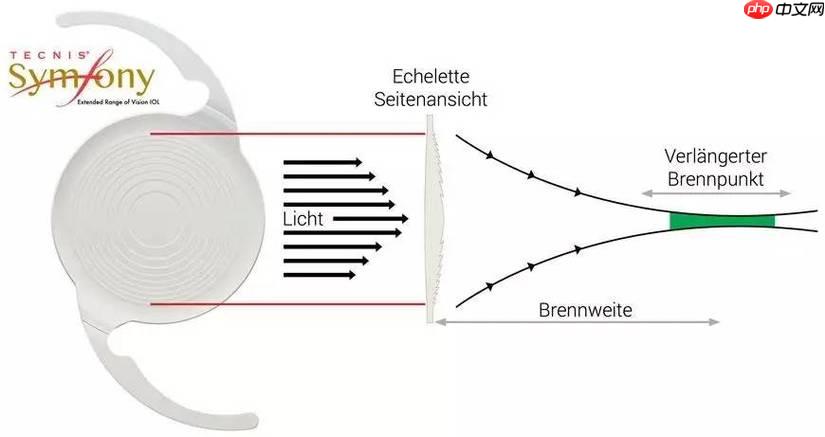核心方法是通过kernelinterface获取项目根目录,读取composer.json文件并用json_decode解析为php数组;2. 将该逻辑封装为composerconfigreader服务,通过依赖注入kernelinterface确保路径可靠性;3. 可注入psr\cache\cacheitempoolinterface对解析结果进行缓存,提升性能;4. 仅在必要时读取extra或config等特定字段,避免暴露整个配置数组;5. 必须处理文件不存在、读取失败及json解析错误等异常情况;6. 避免将敏感或环境相关配置放入composer.json,遵循配置职责分离原则,确保项目可维护性。

要在Symfony应用中获取Composer配置并将其转换为PHP数组,核心方法是直接读取项目根目录下的
composer.json
json_decode
最直接的办法就是定位到
composer.json
<?php
namespace App\Service;
use Symfony\Component\Filesystem\Path; // 这是一个好用的路径工具
use Symfony\Component\HttpKernel\KernelInterface; // 获取项目根目录
class ComposerConfigReader
{
private string $projectDir;
private ?array $composerConfig = null;
public function __construct(KernelInterface $kernel)
{
$this->projectDir = $kernel->getProjectDir();
}
/**
* 获取整个Composer配置数组。
* @throws \RuntimeException 如果composer.json文件不存在或解析失败。
*/
public function getComposerConfig(): array
{
if ($this->composerConfig !== null) {
return $this->composerConfig; // 避免重复读取和解析
}
$composerJsonPath = Path::join($this->projectDir, 'composer.json');
if (!file_exists($composerJsonPath)) {
// 生产环境这通常不应该发生,但在某些测试或部署场景下可能需要处理
throw new \RuntimeException(sprintf('无法找到 composer.json 文件:%s', $composerJsonPath));
}
$content = file_get_contents($composerJsonPath);
if ($content === false) {
throw new \RuntimeException(sprintf('无法读取 composer.json 文件内容:%s', $composerJsonPath));
}
$config = json_decode($content, true); // true表示解析为关联数组
if (json_last_error() !== JSON_ERROR_NONE) {
// JSON解析失败,可能是文件损坏或格式不正确
throw new \RuntimeException(sprintf('解析 composer.json 失败:%s', json_last_error_msg()));
}
$this->composerConfig = $config;
return $this->composerConfig;
}
/**
* 获取Composer配置中的 'extra' 字段内容。
*/
public function getExtra(string $key = null): mixed
{
$config = $this->getComposerConfig();
$extra = $config['extra'] ?? [];
if ($key === null) {
return $extra;
}
return $extra[$key] ?? null;
}
/**
* 获取Composer配置中的 'config' 字段内容。
*/
public function getConfig(string $key = null): mixed
{
$config = $this->getComposerConfig();
$configSection = $config['config'] ?? [];
if ($key === null) {
return $configSection;
}
return $configSection[$key] ?? null;
}
}将上述服务添加到你的
config/services.yaml
# config/services.yaml
services:
App\Service\ComposerConfigReader:
arguments:
$kernel: '@kernel' # 自动注入当前Kernel实例,获取项目根目录现在,你就可以在任何需要Composer配置的地方注入
App\Service\ComposerConfigReader
这听起来有点“多此一举”,毕竟Composer是用来管理依赖的,跟应用程序运行时逻辑似乎没太大关系。但实际开发中,确实有些场景会让我考虑去读取
composer.json
composer.json
extra
composer.json
composer.json
extra
extra
config/packages
总的来说,这通常是为了获取一些项目级别的元数据或者一些不适合放在
.env
config/packages
直接读文件当然可以,但为了更符合Symfony的“规矩”,并且提高代码的健壮性和可维护性,有几个地方可以优化:
封装为服务:就像上面解决方案中展示的那样,将读取和解析
composer.json
依赖注入KernelInterface
__DIR__ . '/../../composer.json'
KernelInterface
getProjectDir()
考虑缓存:
composer.json
Psr\Cache\CacheItemPoolInterface
// 在 ComposerConfigReader 服务的构造函数中注入缓存服务
use Psr\Cache\CacheItemPoolInterface;
// ...
private CacheItemPoolInterface $cache;
public function __construct(KernelInterface $kernel, CacheItemPoolInterface $cache)
{
$this->projectDir = $kernel->getProjectDir();
$this->cache = $cache;
}
public function getComposerConfig(): array
{
// ... (省略之前的代码)
$cacheItem = $this->cache->getItem('app.composer_config'); // 定义一个缓存键
if ($cacheItem->isHit()) {
$this->composerConfig = $cacheItem->get();
return $this->composerConfig;
}
// ... (读取和解析 composer.json 的逻辑)
$cacheItem->set($config);
// 缓存可以设置一个较长的有效期,或者在缓存清除时自动失效
$this->cache->save($cacheItem);
$this->composerConfig = $config;
return $this->composerConfig;
}然后在
services.yaml
# config/services.yaml
services:
App\Service\ComposerConfigReader:
arguments:
$kernel: '@kernel'
$cache: '@cache.app' # 假设你已经配置了 cache.app 服务这样,第一次请求时会读取文件并缓存,后续请求直接从缓存中获取,大大提高了效率。
针对性获取:如果你的服务只需要
extra
getExtraValue(string $key)
虽然读取
composer.json
KernelInterface::getProjectDir()
json_decode
null
json_last_error()
json_last_error_msg()
composer.json
extra
extra
extra
??
is_array
is_string
composer.json
composer install
composer update
composer.json
config/packages
.env
composer.json
extra
composer.json
extra
以上就是Symfony 怎么将Composer配置转数组的详细内容,更多请关注php中文网其它相关文章!

每个人都需要一台速度更快、更稳定的 PC。随着时间的推移,垃圾文件、旧注册表数据和不必要的后台进程会占用资源并降低性能。幸运的是,许多工具可以让 Windows 保持平稳运行。

Copyright 2014-2025 https://www.php.cn/ All Rights Reserved | php.cn | 湘ICP备2023035733号